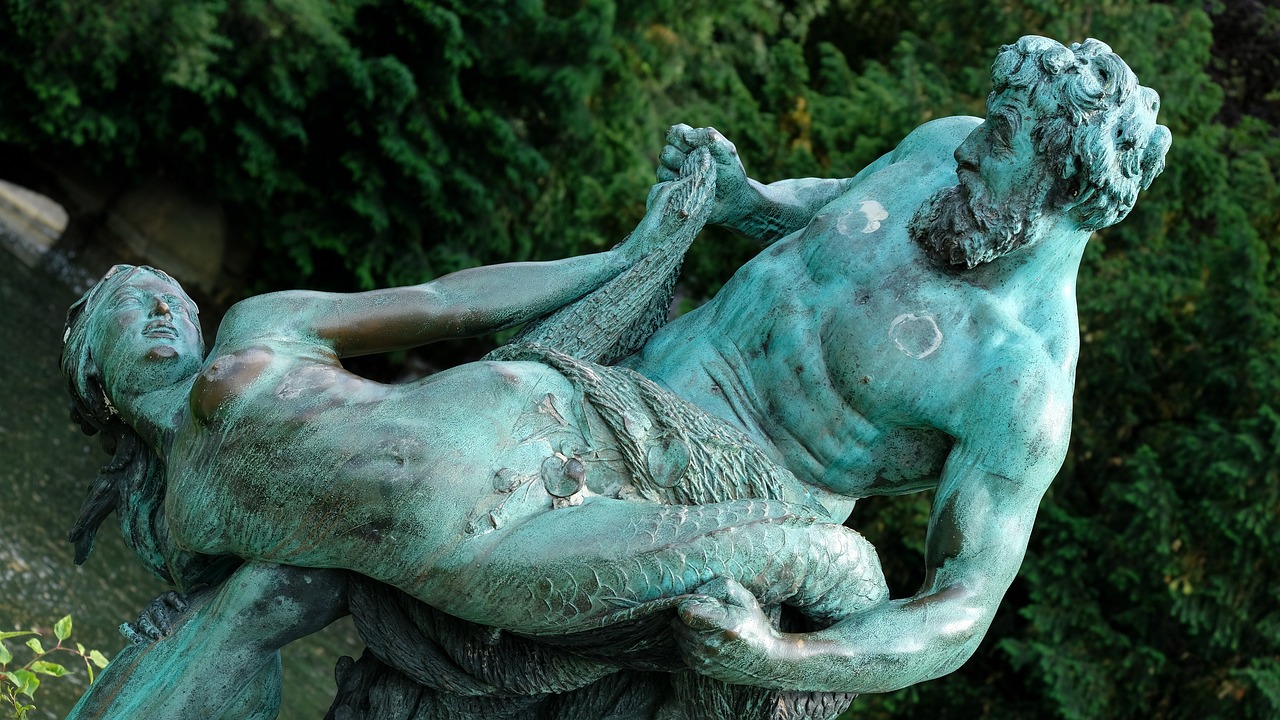Poseidon: The God of Sea, Earthquakes, and Horses
Poseidon was one of the key gods in Greek mythology, revered as the divine authority of the sea, earthquakes, floods, and droughts, as well as horses. He is often illustrated as a robust, mature man with a dark beard and holds a trident, symbolizing his power over the ocean and its creatures.
Myths Surrounding Poseidon
Upon his birth, Poseidon faced a dire fate when his father, Kronos (Cronus), devoured him. However, he was later rescued by Zeus with the assistance of Metis, a goddess who presented Kronos with a potion that led him to regurgitate Poseidon. During the infamous War of the Titanes, Cyclopes fashioned a formidable trident for him, enabling Poseidon and his brothers, Zeus and Hades, to overthrow the older generation of gods and confine them in Tartaros. Following their victory, Poseidon drew the lot and secured the sea as his sovereign domain.
In one of the notable episodes of his mythology, Poseidon defended the Olympian gods against the invading Gigantes, defeating the giant Polybotes by burying him under the island of Kos. Additionally, he contested Athena for the patronage over the city of Athens by presenting the first horse as an offering. However, upon losing the competition, he retaliated by sending drought upon the land.
Poseidon also had various encounters with mortals, frequently transforming into different forms, including animals and water, to seduce a multitude of nymphs and human women. Some of his most recognized liaisons included the Gorgon Medusa and Aithra, the mother of the hero Theseus. He played a significant role in the construction of Troy’s walls but unleashed a monstrous sea creature upon its land after King Laomedon reneged on their payment agreement.
Further, in a cruel twist of fate, Poseidon retaliated against Odysseus after the hero blinded his son, the cyclops Polyphemos, by summoning storms that shattered his fleet during their return journey from Troy.
Symbols and Attributes of Poseidon
The distinguishing emblem of Poseidon was his trident, a three-pronged spear used for various purposes, including invoking storms and causing earthquakes. He is occasionally seen with a boulder adorned with marine life. Artistic renditions depict him either wearing a robe with a cloak or entirely nude, often adorned with a headband or a crown of celery leaves.
Sacred Animals and Plants
Poseidon’s most sacred creatures included the bull, horse, and dolphin. As the sea deity, he was closely linked to fish and other oceanic beings. His chariot was often described as being pulled by horses with fish-like tails, and the Cretan Bull, which fathered the Minotaur, is perhaps his most famed animal in mythology. He also held the pine tree and wild celery in high regard, using them to crown champions at the Isthmian Games.
Poseidon’s Familial Relations
Poseidon was born to Cronos and Rhea, making him a brother to prominent deities including Zeus, Hades, Hera, Demeter, and Hestia. He wed Amphitrite, a sea goddess who was Nereus’s daughter, and they parented Triton, a merman. Poseidon had many offspring, both divine and mortal, extending to figures like the cyclops Polyphemos and various mythical horses.
Poseidon in Literature
In ancient literature, Poseidon is frequently described with contrasting traits; he is portrayed as both equal to Zeus in dignity and at times subservient. His palace was famously located at the ocean depths near Aegae, where he amassed his horses. While predominantly associated with the sea, he participated in the affairs of Olympus, often seen among the other gods at their gatherings.
His numerous conflicts over territory with other deities illustrate his contentious nature, such as his rivalry with Athena over Athens, which ultimately resulted in his loss after both deities competed to offer gifts to the mortals.
Worship and Iconography
Poseidon commanded significant reverence across Greece, particularly in regions such as Peloponnesus and the coastal towns of Ionia. His temples often featured sacrifices of various livestock, including bulls and rams, and incorporated horse racing to honor the god. Deeply associated with maritime forces, Poseidon was often recognized in art by his trident, dolphins, or his portrayal alongside significant figures such as Amphitrite and Triton.
In the broader narrative of Greco-Roman mythology, Roman traditions often merged with Greek ones, leading to the identification of Poseidon with Neptune, continually reflecting his enduring legacy as a central figure among the pantheon of gods.



